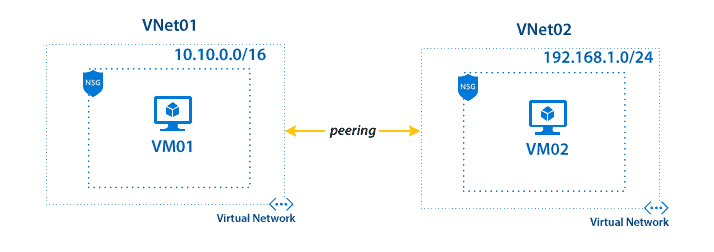Azure Network Models
Network Models are the representation and methods of connecting multiple networks. In Azure also, Microsoft enables some ways to connect multiple networks. I have listed down some of the most used network models.
VNet Peering

Virtual Network peering enables to connect the two or more Virtual Networks in Azure. It also allows transferring data between deployment models, Azure Subscriptions, Azure Active Directory Tenants and Azure regions without downtime and failure. The traffic between the peered virtual networks use Microsoft’s backbone infrastructure and is routed through a private network. Thus, gateways, encryption and public internet are not required.
There are two types of Virtual Network Peering:
- Regional VNet Peering – When the two networks needed to peer are in the same region, the peering is called Regional VNet Peering.
- Global VNet Peering – When the two networks are from different regions, the peering is called Global VNet Peering.
Virtual WAN (Wide Area Network)
Virtual WAN in Azure allows creating a web of multiple networks that are interconnected to each other. It brings multiple networking, security, and routing functionalities together to provide a new single operational interface.

In the above diagram, a Virtual WAN at the centre acts as a single operational hub to manage all the traffic coming from multiple resources in a VNet. Instead of contacting the multiple branches separately, a VNet can contact the central hub to connect with all the branches connected to it.
More Azure Virtual Network Information
Pricing
There is no charge for using Azure VNet; it’s freed from cost. Standard charges are applicable for resources, like Virtual Machines (VMs) and other products. to be told more, see VNet pricing and the Azure pricing calculator
Protecting Resources
Network security may well be defined because the process of protecting resources from unauthorized access or attack by applying controls to network traffic. The goal is to confirm that only legitimate traffic is allowed. Azure includes a sturdy networking infrastructure to support your application and repair connectivity requirements. Network connectivity is feasible between resources located in Azure, between on-premises and Azure hosted resources, and to and from the net and Azure.

No comments:
Post a Comment